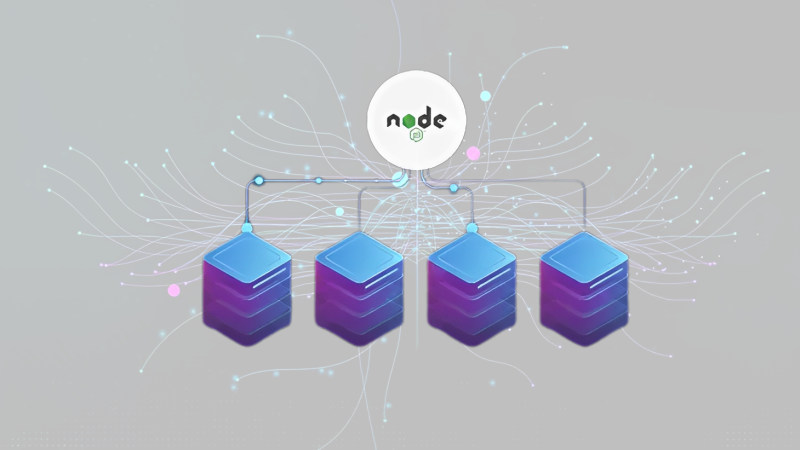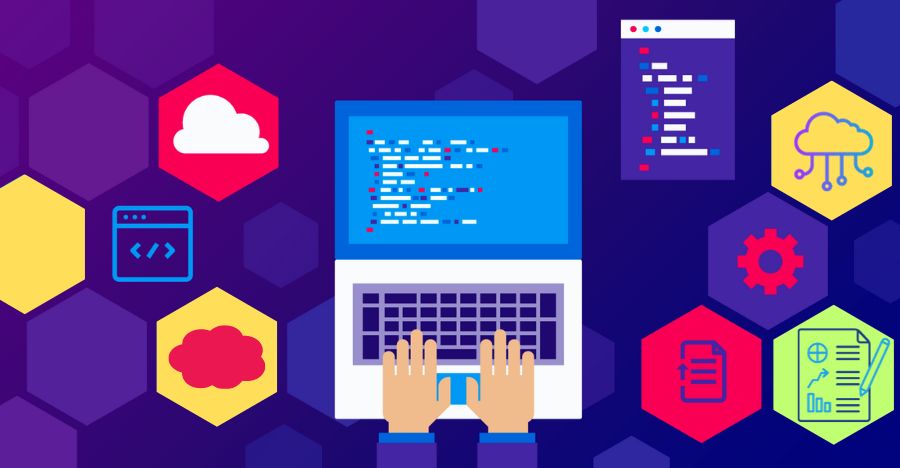Introduction: Microservices and Cloud Native
In today’s world of creating computer programs, two major ideas have become truly significant: microservices (which means breaking up a major program into little pieces) and DevOps (which means working together flawlessly to make software development). At the point when we combine these two ideas, magic happens! In this article, we’ll investigate how Microservices Software Development and DevOps combine and make software projects super successful. It’s like they were intended to be together, and we will figure out why! Thus, prepare for a basic and energizing excursion into the universe of making incredible computer programs with microservices and DevOps.
Types of Microservices
The approach to software development known as architecture is adaptable, and various kinds of microservices can be implemented to meet particular requirements. Here are a few normal kinds of microservices:
1) Business Logic Microservices
These microservices center around exemplifying and overseeing explicit business rules and logic. Teams can independently develop, test, and deploy changes related to a particular aspect of the application by isolating business logic into individual services.
2) Data Microservices
Data handle information-related tasks and services, for example, data set administration, information handling, and investigation. They empower effective and autonomous scaling of information parts, working on general execution.
3) Gateway Microservices
Gateway go about as a section that focuses on client applications and assists with dealing with the directing of solicitations to different microservices. They can deal with validation, load adjusting, and other cross-cutting worries while working on client-side associations.
4) Integration Microservices
Integration make it easier for services and systems to communicate with one another. They handle errands like information synchronization, message expediting, and interfacing different parts inside the microservices environment.
5) Event Driven Microservices
It’s depend on an occasion-driven engineering, where occasions trigger activities across the framework. They are essential for constant handling and frequently use message lines or occasion merchants to impart between administrations.
Microservices for UI
UI are responsible for overseeing UIs and client encounters. They handle show logic, UI parts, and interface, taking into consideration free updates and enhancements to the UI.
1) Microservices for Authorization and Authentication
Security-related issues like user authentication, authorization, and identity management are handled by these microservices. By unifying these capabilities, they guarantee predictable and secure access control across the application.
2) Microservice Monitoring and Logging
Focused on recognizability, observing and logging to gather and examine information connected with the well-being and execution of the general framework. They are crucial in locating issues, solving problems, and making the system work better.
3) Configuration Microservices
Configuration and oversee application settings and setups. They improve adaptability and flexibility by allowing dynamic configuration updates without having to re-deploy entire applications.
4) Task-Explicit Microservices
Task-explicit microservices are intended to deal with explicit, distinct undertakings inside the application. These could incorporate administrations for picture handling, record capacity, or some other particular usefulness.
5) Composite Microservices
To carry out a specific business function, composite coordinate the interactions of multiple microservices. They go about as a more elevated level help that facilitates the execution of different lower-level.
6) Microservices on Edge
Edge microservices are located at the system’s edge, frequently close to users. They handle errands like content delivery and caching and can upgrade reactions to improve client experience.
Understanding these kinds of permits development teams to settle on informed choices while planning and executing their design, fitting the framework to effectively meet explicit business prerequisites.
What is DevOps?
DevOps, which represents Development and Tasks, is a bunch of practices and community methods of reasoning pointed toward further developing joint efforts between programming development and IT tasks. The essential objective is to improve the productivity and adequacy of the product advancement lifecycle. DevOps’ most important features are as follows:
-
Consistent Integration(CI)
DevOps advances a ceaseless mix where engineers regularly consolidate their code changes into a focal storehouse. Automated fabricating and test processes guarantee that new code coordinates flawlessly with the current codebase, distinguishing and tending to mix gives right off the bat in the advancement cycle.
-
Continuous Development (CD)
Continuous Delivery stretches out the standards of CI to naturally send code changes to the creation or arranging conditions after breezing through mechanized assessments. This approach considers a fast and dependable delivery process, decreasing the time between code completion and its accessibility to end clients.
-
Infrastructure as Code (IaC)
Framework as Code includes overseeing and provisioning foundation utilizing code and mechanization instruments. This guarantees that the framework is steady, rendition controlled, and effectively reproducible. IaC makes deployments faster and more reliable.
-
Automated Deployment
DevOps underscores the utilization of automation for sending applications and foundations. Automated deployment pipelines empower steady and repeatable cycles, lessening the risk of human mistakes and it is surprising and productive to guarantee those arrangements.
-
Communication and Collaboration
DevOps underscores a cooperative culture and open correspondence between improvement, tasks, and different partners. Cross-functional teams cooperate to address difficulties, share information, and guarantee a common perspective of venture objectives and necessities.
Embracing these highlights of DevOps prompts more productive, cooperative, and dependable programming improvement processes, eventually working on the quality and speed of conveying programming to end clients.
The Advantageous Interaction of Microservices and DevOps:
Now, let’s explore the heavenly match of Microservices Software Development and DevOps. These two ideas complement one another flawlessly, creating a harmonious relationship that improves each phase of the product advancement lifecycle.
Monolithic Breaking
To understand the magic that unfolds when microservices and DevOps combine efforts, we should initially investigate the singular domains. Microservices architecture advocates breaking down huge, complex applications into smaller, independent services. Each microservice is self-contained, serves a specific business purpose, and communicates with other APIs that are clearly defined. This approach offers various benefits, like better versatility, more straightforward upkeep, and the capacity to freely convey and refresh administrations.
Breaking free from the requirements of monolithic architectures, enable development groups to chip away at smaller, manageable codebases. This measured quality cultivates agility, permitting groups to emphasize and enhance quickly without influencing the whole framework. Consequently, businesses are able to respond more effectively to shifting market demands, ensuring that their software remains adaptable and dynamic.
The Essence of DevOps
On the opposite side of the spectrum is DevOps – a cultural and cooperative development aimed at adjusting improvement and operation groups. DevOps isn’t just about tools and automation; an outlook supports steady correspondence, joint effort, and shared liability all through the product development lifecycle.
To foster a culture of continuous integration and delivery (CI/CD), DevOps practices bring together development, testing, and operations teams. By working together, code is continuously tested, integrated, and deployed, reducing bottlenecks and speeding up the introduction of new features to users. The process of developing software benefits from increased efficiency, fewer errors, and overall enhancement.
Versatility and Adaptability
Microservices’ particular nature adjusts impeccably with DevOps’ accentuation on versatility. Teams can scale particular components according to demand because each can be developed, tested, and deployed independently. This adaptability guarantees that assets are designated proficiently, improving both execution and cost viability.
Rapid Iteration and Continuous Delivery
The agility presented by microservices permits development groups to repeat quickly on specific highlights without influencing the whole application. DevOps rehearses further intensify this readiness through persistent joining and nonstop conveyance. With mechanized testing and organization pipelines, updates can be pushed to creation flawlessly, guaranteeing a steady progression of new elements and enhancements.
Enhanced Collaboration
Microservices and DevOps blossom with cooperation. Microservices support more modest, cross-useful groups to take responsibility for administrations, encouraging a feeling of obligation. DevOps rehearses break down customary boundaries among improvement and tasks, advancing a common possession mindset. This cooperative climate guarantees that issues are tended to quickly and advancements are consistently incorporated into the improvement pipeline.
Fault Isolation and Resilience
Microservices Software Development intrinsically gives issue separation. When joined with DevOps practices, for example, mechanized observing and speedy episode reaction, groups can distinguish and correct issues instantly. This strength guarantees that the effect of disappointments is confined, limiting margin time and upgrading general framework dependability.
Conclusion
In conclusion, the combination of DevOps and microservices produces a software development powerhouse. Their joined assets enable improvement groups to fabricate versatile, adaptable, and strong applications while cultivating a cooperative culture that speeds up the chance to showcase. Embracing the harmonious relationship between Software Development becomes not only an option but also a strategic necessity as organizations continue to navigate the complexities of modern software development. It’s a match made in DevOps paradise, where development, effectiveness, and achievement rule. So, get started on this exciting excursion into the world and watch the magic happen in your software development projects.
Read more:



